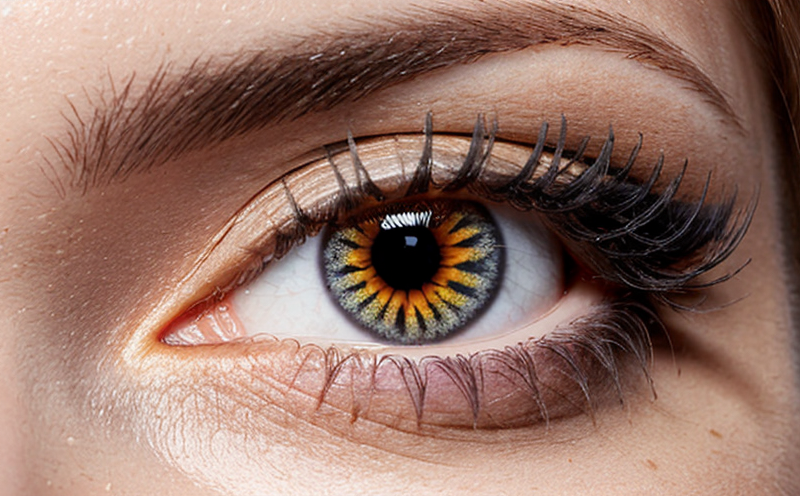Conjunctival Redness Assessment for Eye Cosmetics
The conjunctival redness assessment is a critical test in the cosmetics industry to ensure that eye products do not cause any irritation or discomfort. This procedure evaluates whether a cosmetic formulation has the potential to induce inflammatory responses, such as increased vascularity and hyperemia in the eyes. Eye irritants can lead to significant health issues for consumers, making this assessment essential.
The test is conducted by applying a small quantity of the cosmetic product directly onto the conjunctival sac of the rabbit's eye under controlled laboratory conditions. The conjunctiva, which lines the eyelids and covers the front surface of the eyeball, is monitored for changes in coloration over time. Any observed redness or inflammation is carefully noted and quantified.
The process involves several key steps: first, the rabbit's eyes are thoroughly examined to ensure they are healthy before the test begins. Next, a specified amount of the cosmetic sample is applied using a standardized technique to avoid causing pain or discomfort. The rabbits are then observed for 24 hours post-application under controlled lighting conditions. Any signs of redness or irritation must be reported immediately.
After the initial observation period, further assessments take place at specific intervals (e.g., 1 hour and 6 hours) to monitor any progressive changes in eye condition. Following these observations, the rabbits are euthanized humanely according to local regulations. Their eyes undergo detailed microscopic examination by a qualified pathologist who assesses for signs of inflammation such as increased blood vessel density.
This stringent testing protocol ensures that only safe products reach consumer markets. Compliance with international standards like ISO 10993-10 or OECD Guidelines is mandatory to ensure reliability and consistency across different laboratories worldwide.
- Standardized application techniques minimize variability between tests.
- Use of rabbits as test subjects aligns with established industry practices for ocular safety evaluation.
- Microscopic examination provides detailed insights into the extent and nature of any observed inflammation.
Benefits
The conjunctival redness assessment offers numerous benefits to manufacturers, researchers, and regulatory bodies involved in cosmetic product development. Primarily, it helps identify potential irritants early in the formulation process, allowing for corrective actions before large-scale production begins.
By ensuring that products meet stringent safety requirements set forth by authorities such as the EU Cosmetics Regulation or FDA guidelines, companies can enhance their reputation and maintain compliance with legal standards. This assessment also supports innovation by providing valuable data on which ingredients may need further investigation regarding their compatibility with ocular tissues.
Furthermore, it reduces the risk of product recalls due to adverse reactions during commercial release. A safer product not only protects consumers but also saves costs associated with potential litigation and brand damage.
The results from this assessment contribute significantly towards meeting sustainability goals by promoting responsible sourcing practices that prioritize human health over unnecessary risks.
Why Choose This Test
- Accurate evaluation of potential ocular irritants using internationally recognized methods.
- Comprehensive assessment covering immediate and delayed effects on the conjunctiva.
- Promotion of product safety through early identification of problematic formulations.
- Facilitation of regulatory compliance with stringent cosmetic regulations worldwide.
Customer Impact and Satisfaction
The conjunctival redness assessment plays a pivotal role in enhancing customer satisfaction by ensuring the highest standards of product safety. Consumers trust brands that demonstrate commitment to their well-being, especially when dealing with products intended for sensitive areas like the eyes.
By choosing this test early in the development cycle, manufacturers can address any issues before they become significant problems. This proactive approach not only improves the overall quality but also builds strong relationships between companies and their customers based on trust and reliability.
In addition to immediate benefits, long-term gains include reduced costs associated with post-market recalls and legal disputes. Companies that prioritize safety early on often see increased brand loyalty among consumers who appreciate responsible business practices.





